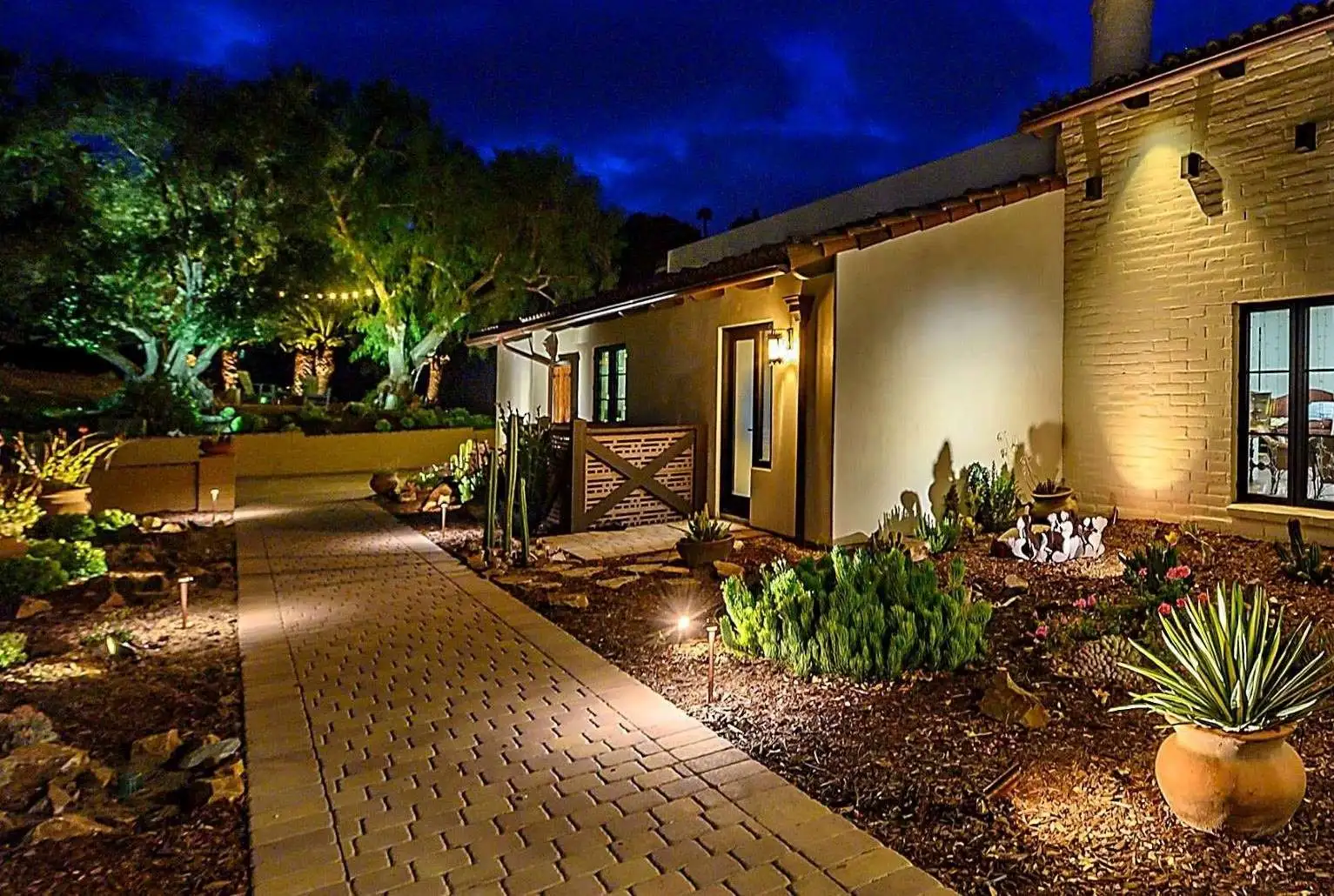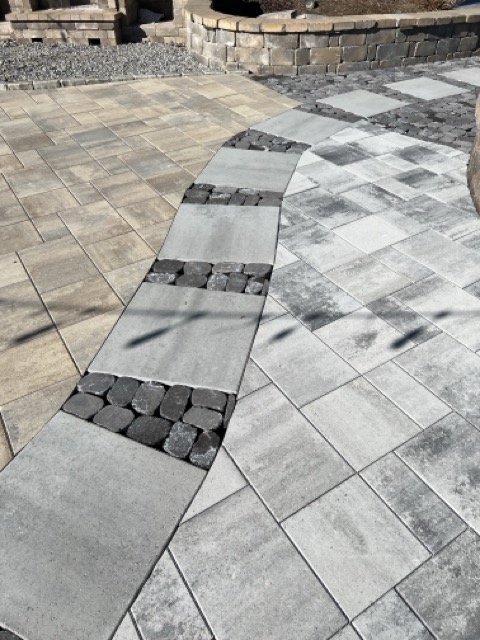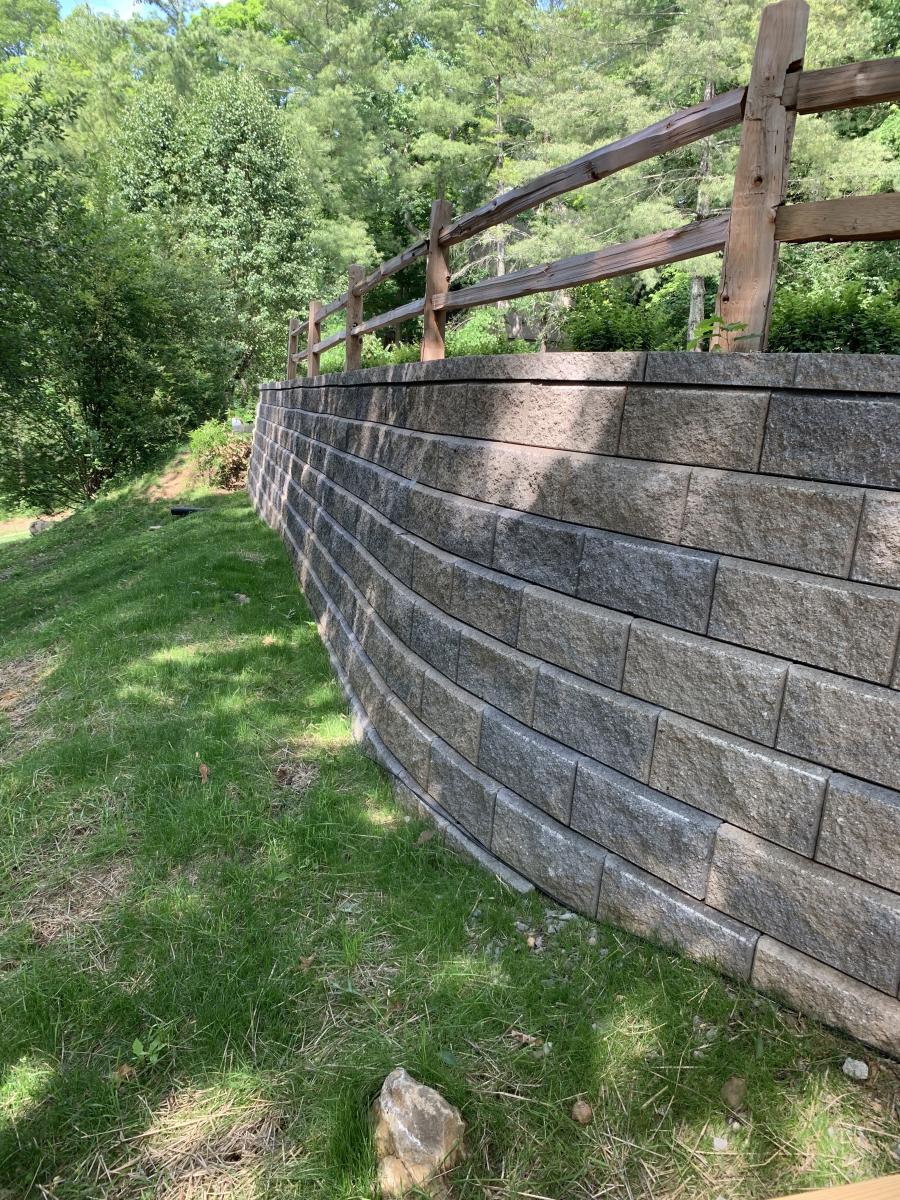Well-designed outdoor lighting can completely transform your Nashville landscape, extending your outdoor living hours while adding beauty, safety, and value to your property with professional landscape design. With the right lighting strategy, your outdoor space becomes a magical evening retreat that showcases your landscape's best features year-round.
After 35+ years of designing and installing outdoor lighting systems throughout Nashville, Franklin, and Brentwood, we've learned that successful landscape lighting combines functionality with artistry—creating spaces that are both beautiful and practical.
The Benefits of Professional Outdoor Lighting
Enhanced Safety and Security
- Pathway illumination prevents trips and falls
- Entry lighting improves visibility at doors
- Perimeter lighting deters intruders
- Step lighting highlights elevation changes
Extended Outdoor Living
- Dining areas become usable after dark
- Entertainment spaces gain evening ambiance
- Pool areas become nighttime retreats
- Garden spaces offer evening enjoyment
Increased Property Value
- Curb appeal improves dramatically
- Architectural features are highlighted
- Landscape investment is showcased
- Year-round beauty is maintained
Energy Efficiency
- LED technology reduces energy costs
- Smart controls optimize usage
- Solar options eliminate electrical needs
- Timer systems prevent waste
Types of Outdoor Lighting Systems
Low-Voltage LED Systems
Best for: Most residential applications
- Voltage: 12-volt systems for safety
- Installation: Easier and safer than line voltage
- Flexibility: Easy to modify and expand
- Energy efficiency: Up to 80% less energy than traditional bulbs
Line Voltage Systems
Best for: Large properties or commercial applications
- Voltage: 120-volt systems
- Power: Higher wattage capabilities
- Professional installation: Required by code
- Durability: Robust for heavy-duty applications
Solar Lighting
Best for: Remote areas or temporary installations
- No wiring required
- Environmentally friendly
- Lower initial cost
- Limited power output
Smart Lighting Systems
Best for: Tech-savvy homeowners
- App control from anywhere
- Voice activation compatibility
- Scheduling capabilities
- Color-changing options
Essential Lighting Techniques
1. Uplighting
Purpose: Highlights trees, architectural features, and focal points
Best Applications:
- Large trees - Creates dramatic shadows and highlights structure
- Architectural elements - Columns, walls, and interesting textures
- Sculptures - Garden art and statuary
- Building facades - Showcases home's architecture
Tips:
- Place fixtures 2-3 feet from the base of trees
- Use narrow beam angles for tall trees
- Avoid overlighting - subtlety is key
- Consider seasonal changes in foliage
2. Downlighting
Purpose: Provides ambient lighting and mimics natural moonlight
Best Applications:
- Dining areas - Soft, overhead illumination
- Seating areas - Comfortable ambient light
- Pathways - Gentle guidance lighting
- Landscape beds - Reveals textures and colors
Tips:
- Mount fixtures high for wider coverage
- Use shields to prevent glare
- Choose warm color temperatures (2700K-3000K)
- Layer with other lighting techniques
3. Path and Area Lighting
Purpose: Ensures safe navigation and defines walkways
Best Applications:
- Main walkways - Clear guidance to entrances
- Garden paths - Safe exploration of landscape
- Driveways - Improved visibility for vehicles
- Steps and elevation changes - Accident prevention
Design Considerations:
- Spacing: Every 6-8 feet for continuous lighting
- Height: Low fixtures (18-24 inches) for path definition
- Style: Should complement architecture
- Brightness: Subtle illumination, not floodlighting
4. Accent Lighting
Purpose: Creates focal points and adds visual interest
Best Applications:
- Water features - Fountains, ponds, and waterfalls
- Specimen plants - Unique trees, shrubs, or flowers
- Garden borders - Defines landscape edges
- Decorative elements - Containers, benches, and art
Techniques:
- Grazing: Light placed close to textured surfaces
- Shadowing: Creates patterns against walls
- Silhouetting: Backlights plants against structures
- Color washing: Broad, even illumination
5. Security Lighting
Purpose: Provides safety and deters unwanted activity
Best Applications:
- Entry points - Doors, gates, and garage areas
- Dark corners - Potential hiding spots
- Property perimeter - Boundary definition
- Valuable areas - Equipment storage, cars
Features:
- Motion sensors - Activate when needed
- Adjustable sensitivity - Prevents false triggers
- Timer override - Manual control options
- Bright output - Sufficient for identification
Lighting Design Principles
Layer Your Lighting
Create depth and interest by combining multiple lighting types:
Ambient Lighting: Overall illumination for general use
- Downlighting from trees or structures
- Area lighting for gathering spaces
- Soft uplighting of large elements
Task Lighting: Focused illumination for specific activities
- Bright pathway lighting
- Cooking area illumination
- Reading or work area lighting
Accent Lighting: Decorative elements that add drama
- Uplighting specimen trees
- Water feature illumination
- Architectural highlighting
Create Focal Points
Primary Focal Points: One or two main features
- Large specimen trees
- Water features
- Architectural elements
- Outdoor living areas
Secondary Focal Points: Supporting elements
- Smaller trees and shrubs
- Garden sculptures
- Plant groupings
- Seating areas
Consider Seasonal Changes
Spring: Highlight flowering trees and emerging foliage with seasonal landscaping Summer: Focus on lush greenery and outdoor living areas Fall: Showcase autumn colors and structural elements Winter: Emphasize evergreens and architectural features
Transform your Nashville landscape with professional outdoor lighting in Nashville, Brentwood, Franklin, or Nolensville. Contact our lighting specialists to illuminate your outdoor space beautifully.
Avoid Common Mistakes
Overlighting: More is not always better
- Use dimmers and controls
- Focus on key elements
- Maintain dark areas for contrast
Glare: Harsh lighting that blinds rather than illuminates
- Use shields and louvers
- Position fixtures carefully
- Choose appropriate beam angles
Uneven Lighting: Bright spots and dark areas
- Plan fixture placement carefully
- Use consistent color temperatures
- Maintain fixtures regularly
Lighting Zones for Your Nashville Landscape
Front Yard Lighting
Goals: Curb appeal, safety, and welcoming ambiance
Essential Elements:
- Entrance lighting - Well-lit front door and walkway
- Driveway illumination - Safe vehicle access
- Landscape highlighting - Key trees and plantings
- Architectural accents - Home's best features
Design Tips:
- Keep lighting warm and inviting
- Avoid harsh security lighting in front yard
- Highlight mature trees and established plantings
- Consider seasonal decorative lighting
Backyard Lighting
Goals: Entertainment, relaxation, and extended outdoor living
Essential Elements:
- Patio/deck lighting - Dining and entertaining areas
- Pool lighting - Safety and ambiance (if applicable)
- Garden path lighting - Safe navigation
- Landscape accents - Privacy screening and focal points
Design Tips:
- Create intimate gathering spaces
- Use warmer color temperatures
- Install dimmer controls for flexibility
- Consider string lights for casual ambiance
Side Yard Lighting
Goals: Security, utility access, and transition zones
Essential Elements:
- Gate lighting - Safe entry and exit
- Utility area lighting - Functional illumination
- Pathway connections - Links between front and back
- Privacy screening - Softly lit barriers
Specialty Areas
Pool and Water Features:
- Underwater LED lighting
- Fountain and waterfall accents
- Safety perimeter lighting
- Reflection and shimmer effects
Outdoor Kitchens:
- Task lighting for cooking areas
- Ambient lighting for dining
- Accent lighting for bar areas
- Safety lighting for walkways
Garden Areas:
- Seasonal plant highlighting
- Pathway through garden beds
- Bench and seating illumination
- Sculptural element accents
Technology and Control Options
Smart Lighting Controls
WiFi-Enabled Systems:
- Smartphone app control
- Voice assistant integration
- Custom scheduling options
- Remote monitoring capabilities
Benefits:
- Energy savings through scheduling
- Enhanced security with random patterns
- Convenience of remote control
- Integration with home automation
Timer and Sensor Systems
Astronomical Timers: Adjust automatically for sunrise/sunset Motion Sensors: Activate lighting when needed Photocells: Turn lights on at dusk, off at dawn Manual Overrides: Allow custom control when needed
Dimming and Color Options
Dimming Controls: Adjust brightness for different occasions Color-Changing LEDs: Seasonal and holiday customization Tunable White: Adjust warmth throughout the evening Scene Presets: Pre-programmed lighting combinations
Installation and Maintenance
Professional Installation Benefits
- Code compliance and permit handling
- Proper electrical connections for safety
- Warranty protection on equipment and labor
- Design expertise for optimal results
DIY Considerations
Good for:
- Simple path lighting projects
- Solar lighting installations
- Adding fixtures to existing systems
- Temporary or seasonal lighting
Professional Help Needed for:
- Line voltage installations
- Complex control systems
- Electrical panel connections
- Waterproofing and weatherproofing
Maintenance Requirements
Monthly:
- Clean fixtures and lenses
- Check for burned-out bulbs
- Test motion sensors and timers
- Adjust fixture positions if needed
Seasonally:
- Trim vegetation around fixtures
- Check wire connections
- Update timer settings
- Inspect for weather damage
Annually:
- Professional system inspection
- Transformer and control testing
- Fixture replacement as needed
- System upgrades and expansions
Cost Considerations
Initial Investment
Basic System (8-12 fixtures): $2,000-4,000 Comprehensive System (20-30 fixtures): $5,000-10,000 Luxury System (40+ fixtures): $10,000-20,000+
Factors Affecting Cost:
- Number and type of fixtures
- Complexity of control systems
- Electrical work required
- Landscape modifications needed
Operating Costs
LED Efficiency: 80-90% less energy than halogen Smart Controls: Additional 20-30% energy savings Maintenance: Minimal with quality LED fixtures Replacement: LED bulbs last 15-25 years
Return on Investment
- Property value increase: 5-10% for well-designed systems
- Extended outdoor season: More months of outdoor use
- Security benefits: Potential insurance savings
- Energy savings: LED systems pay for themselves
Seasonal Lighting Ideas
Spring Lighting
- Highlight flowering trees (dogwoods, redbuds)
- Illuminate fresh green foliage
- Accent spring bulbs and early perennials
- Celebrate outdoor entertaining season
Summer Lighting
- Focus on outdoor living areas
- Highlight lush, full foliage
- Create cooling visual effects near water
- Extend evening outdoor activities
Fall Lighting
- Showcase autumn color changes
- Highlight evergreen structure
- Warm lighting for cozy gatherings
- Prepare for holiday decorating
Winter Lighting
- Emphasize architectural elements
- Highlight evergreen trees and shrubs
- Create warm, welcoming entry lighting
- Integrate with holiday decorations
Conclusion
Professional outdoor lighting transforms your Nashville landscape into a year-round showcase that extends your living space and enhances your property's beauty and value. The key to success lies in thoughtful design that balances functionality with aesthetics, using the right combination of lighting techniques to create the perfect ambiance for your lifestyle.
Whether you're looking to improve safety, enhance security, or simply create a magical evening atmosphere, the right lighting design will make your outdoor space a destination you'll want to enjoy every night of the year.
Ready to illuminate your landscape? Contact Crenshaw Landscaping for a consultation. Our lighting design experts will help you create a custom lighting plan that showcases your landscape's best features while meeting your specific needs and budget.
Schedule your free lighting consultation today and discover how professional outdoor lighting can transform your Nashville landscape into an evening paradise.



